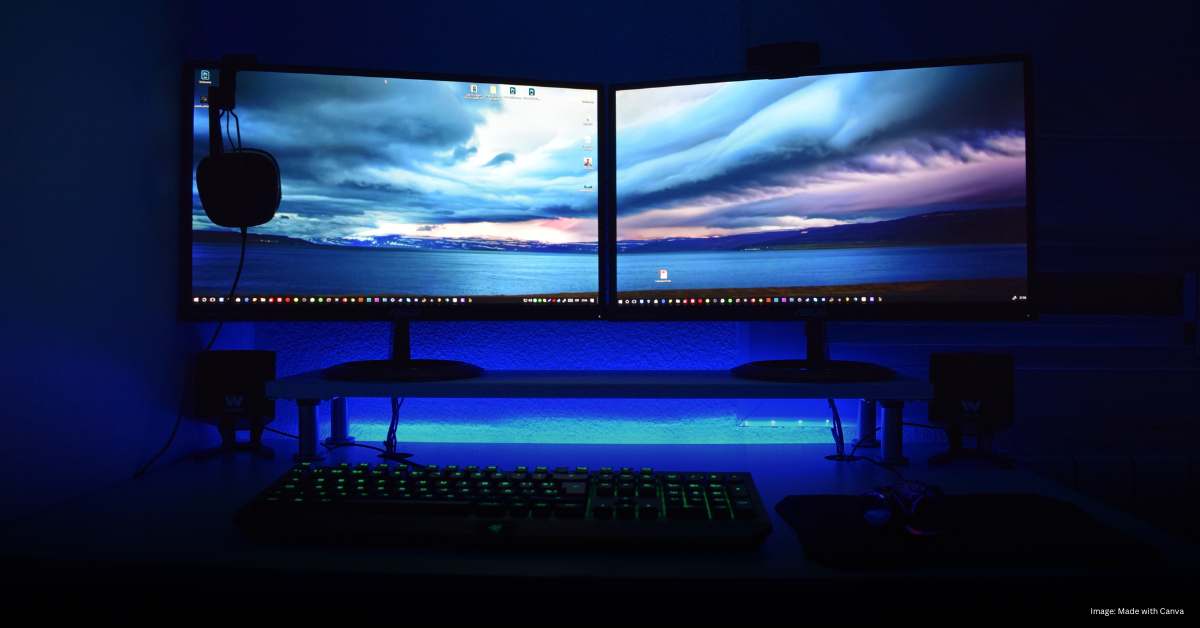Using two monitors can boost your productivity, make multitasking easier, and provide more screen space for your work or play. But if you’ve never set up dual monitors before, it can seem a bit complicated. Don’t worry! In this guide, we’ll walk you through the process of using two monitors in a simple and easy-to-understand way.
Why Use Two Monitors?
Using two monitors allows you to see more at once without constantly switching between tabs or windows. This is great for work, gaming, or even watching videos while doing other tasks. Imagine having your email open on one screen while working on a document on the other. It’s all about making your life easier and more efficient.
Understanding the Basics
Before you start, you need to make sure you have everything you need. Most importantly, you’ll need a second monitor and the right cables to connect it to your computer. Check your computer’s ports to see if they match your monitor’s inputs. Common connections include HDMI, DisplayPort, and VGA.
Checking Your Computer’s Capabilities
Not all computers can handle two monitors. You’ll need to make sure your computer’s graphics card supports multiple displays. Most modern computers do, but it’s always good to double-check. You can find this information in your computer’s settings or by looking up your graphics card online.
Choosing the Right Monitor
When picking a second monitor, consider the size, resolution, and type. You might want a monitor that matches your primary one in size and resolution, or you might prefer a different setup depending on your needs. The goal is to have a smooth experience, so pick a monitor that suits your work or play style.
Setting Up Two Monitors
Once you have your monitors and cables ready, it’s time to set them up. Start by connecting the second monitor to your computer. Then, turn on both monitors and your computer. Your computer should automatically detect the second monitor, but if it doesn’t, you may need to adjust some settings.
Adjusting Display Settings
Go to your computer’s display settings to arrange the monitors. You can choose to extend your display (which gives you two separate screens) or duplicate it (which shows the same thing on both monitors). Most people prefer the extended display option for more workspace.
Organizing Your Workspace
Arrange your monitors in the settings to match their physical positions on your desk. This way, moving your mouse or dragging windows between screens feels natural. You can also adjust the resolution and orientation of each monitor to suit your preferences.
Troubleshooting Common Issues
Sometimes, things don’t go as planned. If your second monitor isn’t being detected, check the cables and connections. Make sure your computer’s drivers are up to date. If the screen looks weird, you might need to tweak the resolution or refresh rate in the display settings.
Dealing with Different Resolutions
If your monitors have different resolutions, you might notice that things look bigger or smaller on one screen. To fix this, you can adjust the scaling settings on your computer. This helps make everything look consistent across both monitors.
Conclusion
Using two monitors can make your digital life easier and more efficient. Whether you’re working on multiple tasks or just want more screen space, the benefits are clear. Setting up two monitors may take a little effort, but once you do, you’ll wonder how you ever lived without it.
FAQs
Can I use two monitors with a laptop?
Yes, you can! Most laptops support at least one external monitor. Some laptops even support two external monitors if you have the right connections and a powerful enough graphics card.
Do I need a special cable to connect my second monitor?
Not necessarily. It depends on the ports available on your computer and monitor. HDMI, DisplayPort, and VGA are common options. Just make sure your cables match the ports on both your computer and monitor.
Will using two monitors slow down my computer?
Using two monitors shouldn’t slow down your computer if your hardware is capable. However, if your computer is older or has a weaker graphics card, you might notice some performance issues. Upgrading your hardware can help.
Can I use two monitors with different brands or models?
Yes, you can mix and match monitors from different brands or models. Just keep in mind that there might be slight differences in color or image quality. Adjusting the settings on each monitor can help minimize these differences.
Using two monitors is a great way to increase your productivity and improve your computing experience. With the right setup and a little tweaking, you’ll be able to enjoy all the benefits of having extra screen space.


